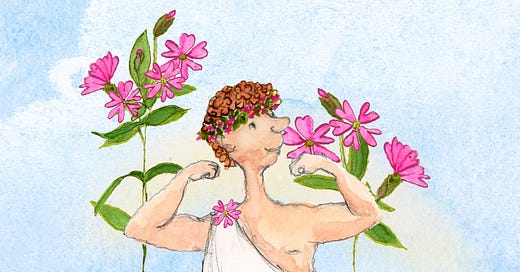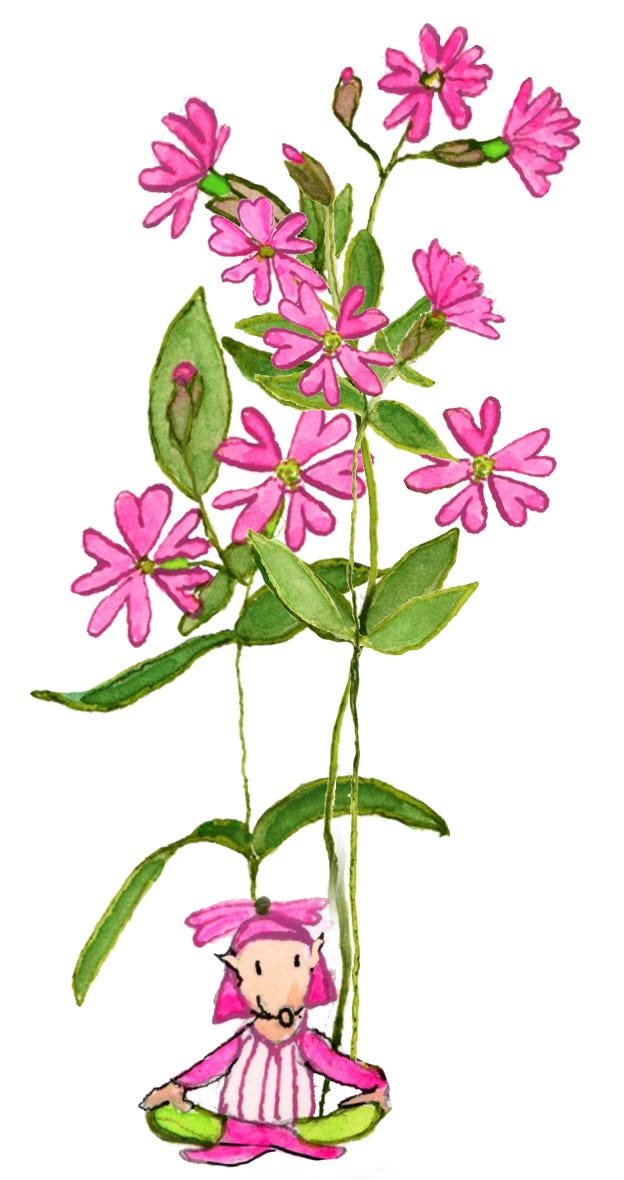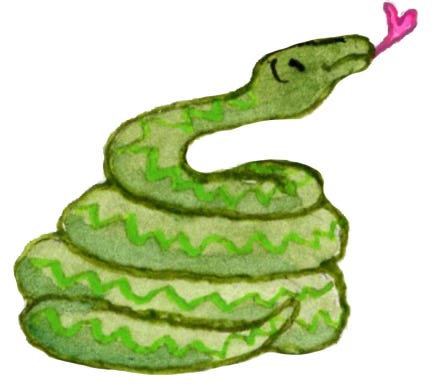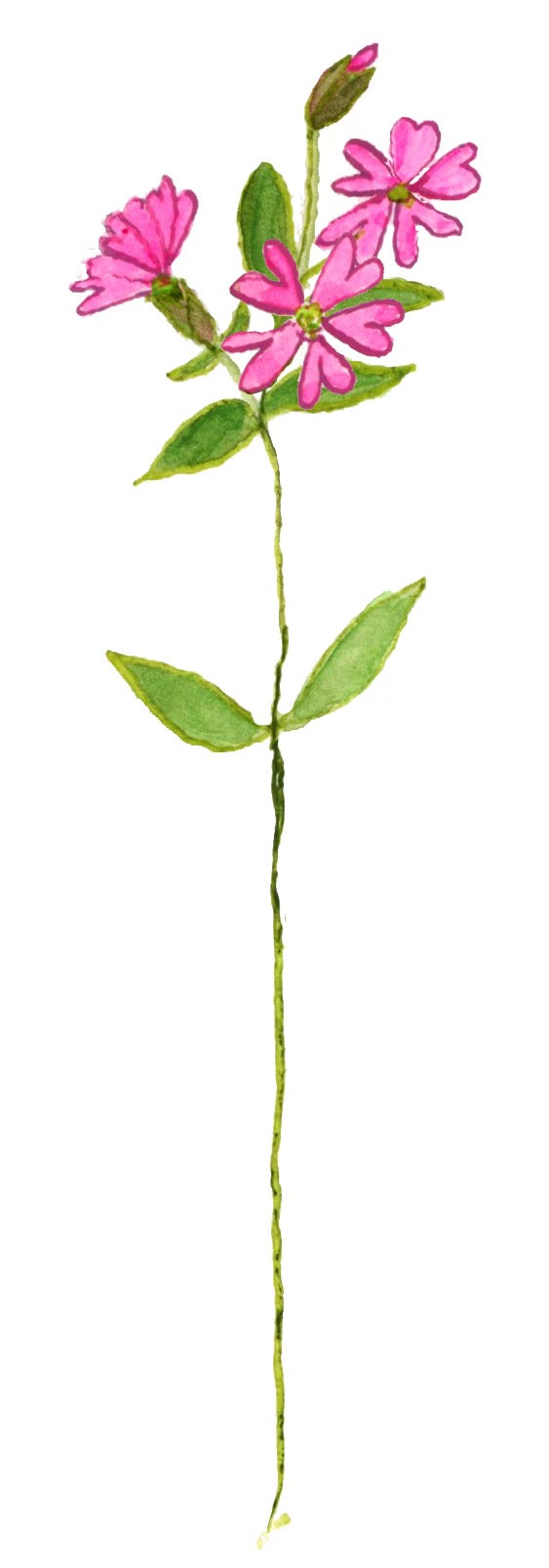Red Campion, the flower of champions! The Romans used to weave bright Red Campion into the garlands they used to crown the winners of their public games. The Latin word Campione or Campio comes from the word Campus, meaning battle field.
But it’s not only the flower of champions. It’s also one of the flowers of the fairy folk. In folklore Red Campion protected fairies from being discovered by humans.
Being the protector of the fairy folk, it was said that picking the flowers would bring the wrath of the fairies down upon you, even causing death in your family. This gave the plant names like ‘Mother Dee’ (mother die) and ‘Devil’s Flower’.
If you pick Red Campion in Wales, the consequences varied but weren’t quite so dire. The wrath invoked by the fairies in some parts could cause terrible thunderstorms, resulting in the the flower being known as Blodyn Taranau or Blod Trane, meaning Thunder Flower. In other parts of Wales, it was believed the fairies would set snakes on you if you brought red campion into the home, resulting in Red Campion there being known as Goldwyn Neidr (Snake Flower). Best, perhaps, to leave the flowers unpicked and outside and not upset the fairies.
The snake references don’t stope there. In traditional folk medicine Red Campion seeds were used as a remedy for snakebites and it was known as Adder’s Flower. Sympathetic Magic was at play here, the thinking being that if the flower looks like a snake’s tongue, surely it would cure snake bites.
It didn’t.
(With a bit of imagination, you can just about see a snake’s tongue in the individual rose-red flower petals, which have a notch in them.)
Worries about fairy folk causing trouble if you picked the flowers and its unimpressive record in curing snake bites, meant that Red Campion’s use as a medicine gradually died out. (See also Adder’s Tongue, Ophioglossum, which has a similar association with snakebite remedies that didn’t work.)
The scientific name Silene, most likely comes from the Greek word for saliva, ‘Sialon”. Red Campion’s female flowers secret sticky froth on its stems to trap pollen from insects that come to feed on her nectar.
Red Campion has male flowers too, hence the second part of the scientific name, ‘Dioica’, which means two houses. Referring to the fact that there are both male and female Red Campions.
As with Ragged Robin, young men in the 19th century wore Red Campion flowers (then also known as ‘Bachelor’s Buttons’) in their Button holes. Unworried about the wrath of fairies, there was also the bonus that if the flower was still looking fresh at the end of the day, you’d be lucky in love.
There are a number of other names for Red Campion:
Ragged Jack, Scalded Apples, Johnny Woods (it grows abundantly in woodland), Poor Robin, Soldier’s Buttons, Mary’s Rose, Hare’s Eye and Gipsy Flower.
If you enjoyed reading this, you might enjoy reading about other wildflowers too. You can easily find all posts written so far in the Flowerology alphabetical archive .
This newsletter is NOT a field guide for flower identification. It’s often difficult to tell the difference between harmless plants and poisonous plants and some flowers are rare and protected by law, so, NEVER pick or use any plants or flowers if you’re not sure about them.
illustrations and text ©Chantal Bourgonje














That's nature :-)
Another lovely story, you must be awash with coffee . . . ( capulus in latin )